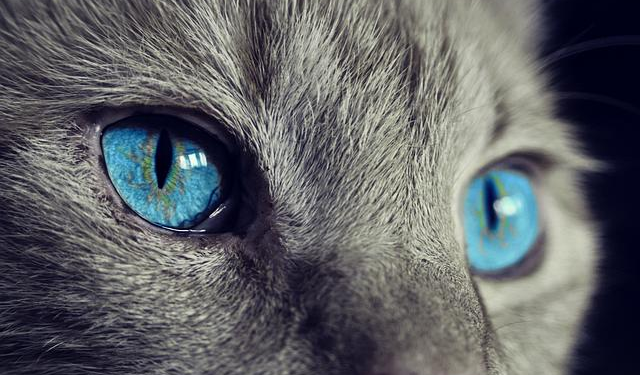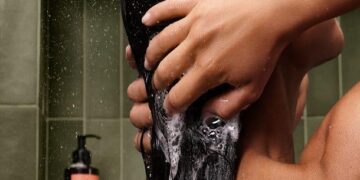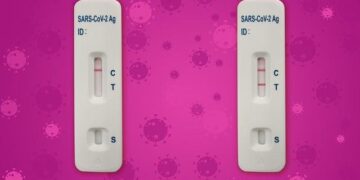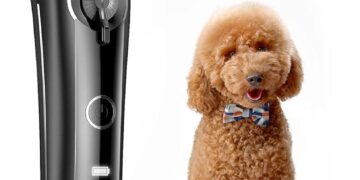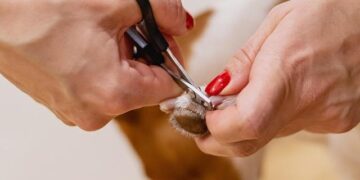Table of Contents
Introduction: The Elegant Enigma
The Poodle’s silhouette is unmistakable—an icon of elegance, intelligence, and proud bearing.1
Central to this image are the ears: long, graceful, and pendulous, framing the face with a soft dignity.
Yet, these defining features harbor a unique challenge.
They are not a design flaw, but rather an anatomical distinction that demands a specific kind of understanding and care from their human custodians.
Stewarding a Poodle’s ear health is a journey of vigilance, partnership, and proactive practice.
It transforms a routine chore into a meaningful ritual of care, deepening the bond between human and animal.
This guide serves as a comprehensive map for that journey, navigating the ‘why’ behind the Poodle’s susceptibility, mastering the ‘how’ of safe and gentle cleaning, and clarifying the ‘when’ of seeking professional partnership.
By embracing this knowledge, an owner can ensure their elegant companion enjoys a life of comfort, free from the distress of ear ailments.
Chapter 1: Anatomy of an Icon – Understanding the Poodle Ear
To effectively care for a Poodle’s ears, one must first appreciate their unique architecture.
The very features that contribute to their distinctive look are the same ones that create a predisposition to health issues.
This is not a failing of the breed, but a consequence of anatomy meeting a modern lifestyle.
The challenge arises from a convergence of three key characteristics: the ear flap, the canal structure, and the prolific hair growth.
The Outer Architecture (The Pinna)
The visible part of the ear, the long, floppy ear flap known as the pinna, is the first element in this anatomical equation.2
Covered in the Poodle’s signature curly coat, the pinna functions to funnel sound waves toward the ear canal.
However, its heavy, pendulous nature means it constantly covers the ear opening, severely restricting airflow.3
This creates a closed, humid environment, which is the first step in establishing a microclimate ripe for problems.5
The Inner Labyrinth (The Ear Canal)
Unlike a human’s short, straight ear canal, a dog’s ear canal is a long, narrow passage with a distinct “L” shape, featuring both a vertical and a horizontal component.2
This structure is a critical piece of the puzzle.
Gravity cannot easily clear debris, wax, or fluid from the deep horizontal canal.
Instead, this section acts as a sump, trapping moisture and matter where it can fester out of sight.8
This anatomical bend makes natural drainage nearly impossible and complicates cleaning efforts.
The Poodle’s Prolific Hair
The final, and perhaps most defining, factor for the Poodle is the dense, curly hair that grows not just on the pinna, but deep inside the ear canal itself.10
This is a trait few other breeds share to this extent.
This internal hair acts like a wick, drawing moisture into the canal, while also serving as a net that traps earwax, dirt, and debris.4
This mat of hair and debris further obstructs the already poorly ventilated canal, compounding the issue of trapped moisture and creating an ideal breeding ground for pathogens.5
The “Perfect Storm” Synthesis
The combination of these three features—the floppy pinna, the L-shaped canal, and the dense internal hair—creates what can only be described as a “perfect storm” for ear problems.
The result is a deep, dark, warm, moist, and poorly ventilated environment—a literal incubator for the microscopic yeast and bacteria that lead to otitis externa, the clinical term for inflammation of the outer ear canal.3
This anatomy is not an accident of aesthetics but likely a functional adaptation for the Poodle’s original purpose as a water retriever.
The heavy pinna would have protected the inner ear from the immediate splash and impact of water, while the hair may have served as an initial barrier.
In that historical context, the anatomy was an asset.
In a modern domestic setting, however, this same anatomy becomes a liability.
It no longer protects against acute water entry during a hunt but instead traps chronic, low-level moisture from bathing, humidity, and the dog’s own secretions.4
The owner’s role, therefore, is not to “fix” a flaw but to manage a specialized feature, artificially creating the dry, aerated environment that the Poodle’s modern life no longer provides.
Chapter 2: A Lexicon of Distress – Reading Your Poodle’s Ear Signals
Poodles communicate discomfort through a subtle language of behaviors and physical signs.
Learning to read this language allows for early intervention, preventing minor irritations from escalating into painful infections.
The symptoms are not merely a checklist; they often tell a story of progression, guiding the owner toward the most appropriate response.
The Subtle Language of Discomfort (Behavioral Cues)
The earliest warnings are often behavioral, as the dog attempts to relieve its own discomfort.
- Head Shaking & Tilting: This is one of the most common and earliest signs. The dog may shake its head frequently or hold it at a persistent tilt, trying to dislodge fluid or alleviate an itchy or full sensation in the ear canal.10
- Scratching & Rubbing: If a Poodle is frequently scratching at its ears with a hind paw or rubbing its head against furniture, carpets, or even its owner, it is a clear sign of irritation and itchiness within the ear.2
- Pain & Sensitivity: As an infection progresses and inflammation worsens, pain becomes a prominent feature. The dog may whine or yelp when the ear is touched, or become generally head-shy, pulling away from petting.9 This indicates a more advanced and painful condition that requires immediate attention.
The Physical Evidence (Observable Signs)
A weekly check of the ears provides an opportunity to gather physical evidence of a brewing problem.
- Odor: The smell of the ear is a powerful diagnostic clue. A distinctive yeasty or “corn chip-like” odor is a hallmark of a fungal overgrowth, typically the yeast Malassezia.13 A more pungent, foul, or fetid smell often points to a bacterial infection.2 A healthy ear should have no discernible odor.
- Discharge: The type of discharge is also telling. A dark brown or black, waxy substance is characteristic of a yeast infection or, in some cases, ear mites, where the debris can resemble coffee grounds.4 A yellow or greenish, pus-like (purulent) discharge is a strong indicator of a bacterial infection and warrants an immediate veterinary visit.10
- Visual Inflammation: A healthy inner ear flap should be a pale, healthy pink. Signs of otitis include redness, swelling of the ear canal opening, and the presence of crusts or scabs on the pinna.10
Understanding these signs as a narrative of a developing infection empowers the owner to act appropriately.
The process often begins silently, with an underlying trigger like an allergy causing microscopic inflammation.16
The first external sign is the dog’s behavioral response: mild head shaking or scratching.11
As the ear’s microenvironment shifts, a yeasty odor may develop, signaling an imbalance in the natural flora.13
If left unaddressed, this progresses to visible redness and dark, waxy discharge as the yeast or bacteria multiply.
The final stage involves significant pain, purulent discharge, and potentially a secondary bacterial infection compounding an initial yeast problem.10
Recognizing where the dog is in this timeline transforms the owner from a reactive bystander into a proactive health detective, capable of triaging the situation effectively.
At-a-Glance Symptom Checker
| Symptom(s) | Likely Stage / Cause | Recommended Action |
| Occasional head shaking after a bath or swim; no odor; no visible discharge. | Early Irritation / Trapped Moisture | Perform routine cleaning with a drying cleaner. Ensure ears are thoroughly dried.7 |
| Persistent scratching; “yeasty” or “Frito pie” smell; dark brown, waxy debris. | Yeast Overgrowth (Malassezia Otitis Externa) | Use a vet-approved antifungal cleaner. Monitor closely. If no improvement in a few days, consult a vet.4 |
| Head tilt; visible redness and swelling; ear is painful to the touch; yellow/green pus-like discharge; foul odor. | Severe Bacterial Infection (Possible Otitis Media) | STOP home care. This is a medical emergency. Consult a veterinarian immediately.10 |
| Dark debris resembling coffee grounds; intense itching. | Ear Mites (Otodectes cynotis) | Consult a veterinarian for diagnosis and specific parasiticidal treatment.11 |
| Ear flap is swollen, warm, and fluid-filled like a pillow. | Aural Hematoma | Consult a veterinarian immediately. This is often caused by trauma from violent head shaking.2 |
Chapter 3: Unraveling the Cause – The Triad of Ear Troubles
Chronic ear infections are rarely a simple matter of a single cause.
Veterinary dermatology uses a sophisticated framework to understand the complex interplay of factors that lead to otitis.
These are categorized as predisposing, primary, and perpetuating factors.5
For the Poodle owner, grasping this concept is key to breaking the cycle of recurring infections.
- Predisposing Factors: These are the inherent characteristics that make a Poodle susceptible but do not, on their own, cause an infection. The Poodle’s ear anatomy—the heavy pinna, L-shaped canal, and internal hair—is the classic example.5 Another major predisposing factor is excessive moisture, whether from frequent swimming, bathing, or a humid climate.6
- Primary Factors: These are the direct triggers that initiate the inflammatory cascade in the ear. The most significant primary factors for Poodles include:
- Allergies: This is arguably the most important and often overlooked primary cause of chronic ear issues. The ear canal is a common site for allergic reactions to manifest.11 Both environmental allergies (atopy) to things like pollens, molds, and dust mites, and food allergies can cause the skin inside the ear to become inflamed, itchy, and prone to secondary infection.6
- Parasites: Ear mites (Otodectes cynotis) can cause intense irritation and lead to secondary infections, especially in puppies.11
- Foreign Bodies: Plant material like grass awns or foxtails can become lodged in the ear canal, causing acute pain and infection.8
- Perpetuating Factors: These are opportunistic organisms and secondary changes that prevent the ear from healing and cause the condition to become chronic. Once the ear environment is compromised by primary and predisposing factors, bacteria (like Staphylococcus and the more dangerous Pseudomonas) and yeast (Malassezia) can overgrow.5 Additionally, improper or over-aggressive cleaning can itself cause inflammation, perpetuating the cycle.12
For many Poodle owners locked in a frustrating battle with recurring ear problems, the answer lies in understanding that the ear is often just the messenger.
The endless cycle of topical cleaners and antibiotics that provides only temporary relief is a strong clue that an underlying primary cause, most often an allergy or dietary issue, has not been addressed.9
The ear, in this context, acts as a “dashboard warning light” for the entire system.20
This realization shifts the owner’s entire problem-solving framework.
The question changes from “How do I kill the yeast in my Poodle’s ear?” to “Why is my Poodle’s system allowing yeast to overgrow in the first place?” This deeper inquiry points toward systemic inflammation and immune system dysregulation, which are frequently rooted in diet.
Diets high in carbohydrates and processed sugars can feed the natural yeast populations in a dog’s body, causing them to proliferate.21
Similarly, an allergic reaction to a common protein like chicken or beef can trigger a body-wide inflammatory response that manifests intensely in the sensitive skin of the ear canal.19
Investigating and managing these “inside-out” factors through dietary changes—such as moving to a limited-ingredient or novel protein diet under veterinary guidance—and adding anti-inflammatory supplements like Omega-3 fatty acids offers the only true path to long-term resolution.6
Chapter 4: The Plucking Predicament – A Balanced Perspective
Few topics in the world of Poodle care are as contentious as the practice of plucking hair from the ear canal.
Proponents and opponents are equally passionate, and definitive consensus remains elusive.8
The most responsible approach is not to declare one side right, but to understand the arguments, weigh the risks and benefits, and make an informed, individualized decision in partnership with a veterinarian or experienced groomer.
The Case for Plucking (The “Airflow” Argument)
The primary rationale for plucking is rooted in the Poodle’s unique anatomy.
Advocates argue that removing the dense mat of hair from the canal is essential for several reasons: it improves air circulation, helps keep the canal dry, allows cleaning solutions and topical medications to penetrate the skin where they are needed, and removes the physical substrate where wax, moisture, and debris accumulate.5
This viewpoint is supported by many professional groomers, for whom plucking is a standard part of a Poodle groom, and notably, by the Poodle Club of America, which advises owners to “gently pull the long hairs out of the ear canal regularly”.1
The Case Against Plucking (The “Inflammation” Argument)
The counter-argument is equally compelling and is often championed by veterinarians.
This perspective holds that the act of plucking hair from the delicate skin of the ear canal causes micro-trauma and inflammation.17
This inflammation can, paradoxically, trigger the very problem it aims to prevent.
The irritated, weeping skin can become an ideal breeding ground for bacteria and yeast, potentially initiating an infection where none existed before.
Furthermore, the process can be uncomfortable or painful for the dog, creating a negative association with ear handling.26
A Dog-Specific Decision Framework
The truth lies not in the dogma of either camp, but in the needs of the individual dog.
The decision to pluck should not be a blanket policy but a targeted intervention based on a careful assessment.
- Individual Assessment: Every Poodle is different. Some have relatively sparse hair in their canals, while others have extremely dense, thick growth that completely obstructs the opening.8 For a Poodle with healthy, clean ears and minimal hair, the principle of “if it isn’t broken, don’t fix it” is wise counsel.27
- A Targeted Intervention: Plucking is best viewed as a therapeutic measure for dogs where the hair is a clear, demonstrable contributor to chronic infections that persist despite diligent cleaning and management of underlying issues like allergies.
- Alternatives to Plucking: For dogs where full plucking is deemed too aggressive, trimming the hair at the opening of the canal with blunt-nosed safety scissors or a clipper with a #10 or #15 blade can be a less invasive compromise to improve airflow.27
- Proper Technique (If Plucking is Necessary): If plucking is the chosen course, it must be done with caution and proper technique to minimize trauma.
- Apply a light dusting of a specialized ear powder to absorb moisture and provide a better grip.8
- Use fingers for the most sensitive control, or blunt-nosed hemostats (forceps) with extreme care, grasping only a few strands of hair at a time.8
- Pull a small amount of hair with a quick, decisive tug in the direction of growth; a slow pull is more painful.10
- Work in short sessions over several days to avoid causing excessive inflammation at once.8
- Critically, always follow a plucking session by thoroughly but gently cleaning the ear with a soothing, drying, vet-approved solution to remove plucked hairs and debris and to calm the skin.26
Ultimately, the decision to pluck should be elevated from a simple grooming choice to a quasi-medical one.
The question is not “Should I pluck my Poodle’s ears?” but rather, “Does my specific dog have a medical condition for which ear hair removal is a recommended part of the treatment plan, as determined in consultation with my veterinarian?” This reframing fosters a more cautious, thoughtful, and health-focused approach.
Chapter 5: The Art of the Clean – A Fear-Free Ritual
Successful ear cleaning is as much about psychology as it is about technique.
Transforming the process from a struggle into a calm, accepted ritual builds trust and ensures long-term compliance.
This requires the right tools, a patient approach, and a precise method.
Part 1: The Custodian’s Toolkit – Assembling Your Supplies
Gathering all necessary items beforehand makes the process smooth and efficient.
- Veterinarian-Approved Ear Cleaner: The single most important tool. The choice of cleaner should be purposeful, as detailed in the next chapter.14
- Cotton Balls or Gauze Squares: Use real cotton, which is more absorbent and gentler than synthetics.33 These are for wiping the visible outer parts of the ear only.7
- A Clean Towel: Essential for draping over your lap or shielding yourself from the inevitable spray when the dog shakes its head.14
- High-Value Treats: These should be special rewards reserved only for ear cleaning, such as small pieces of chicken, cheese, or a favorite commercial treat, to build a powerful positive association.32
What to AVOID
Certain common household items are dangerous and must be avoided.
- Cotton-Tipped Swabs (Q-tips®): This warning cannot be overstated. Due to the dog’s L-shaped canal, swabs risk pushing wax and debris deeper, compacting it against the eardrum. They also pose a significant risk of perforating the fragile tympanic membrane.7
- Alcohol or Hydrogen Peroxide: These substances are harsh and can cause significant burning and irritation, especially in an already inflamed ear. This pain will create a lasting negative association with ear cleaning.14
- Water: Cleaning with water alone is counterproductive. It does not evaporate efficiently from the deep canal and can worsen the moist environment that breeds infection.4
Part 2: Creating a Calm Oasis – The Fear-Free Approach
The emotional environment is as important as the physical one.
- Timing and Temperament: Choose a time when the dog is naturally calm and relaxed, such as after a long walk or vigorous play session.14
- Positive Reinforcement and Desensitization: The goal is to build willing participation through trust.
- Start slowly. For a nervous dog, the first session might just involve touching the ears and giving a treat.35 Progress in small steps: lift the ear flap, treat. Show the cleaner bottle, treat. Let them sniff the bottle, treat.35 Keep sessions short (30 seconds to a few minutes) and always end on a positive note.
- Use powerful distractions. A lick-mat smeared with peanut butter or cream cheese can keep a dog happily occupied. A helper can provide a steady stream of tiny treats.35
- Positioning for Success: Gentle, secure positioning prevents struggle. For small or medium Poodles, sit on the floor and have the dog sit between your legs, facing away.32 For a large Standard Poodle, gently guide them into a corner of the room to prevent them from backing away.32
Part 3: The Technique – A Step-by-Step Walkthrough
- Lift and Straighten: Gently but firmly grasp the ear flap (pinna) and pull it vertically, straight up and slightly away from the head. This action helps to open and straighten the L-shaped canal, allowing the cleaning solution to flow downward effectively.2
- Fill the Canal: Place the tip of the cleaner bottle near, but not touching, the ear opening. Squeeze generously to completely fill the ear canal with the solution. It is normal and necessary for some of the liquid to overflow.14
- The “Squish” Massage: This is the most critical step for effective cleaning. While still holding the pinna up, use your other hand to massage the base of the ear, just below the opening, for about 30 seconds. You should hear a distinct “squishing” sound. This sound confirms that the solution is being agitated deep within the horizontal canal, breaking up wax and debris.15
- The Shake: Release the ear, step back, and allow the dog to shake its head vigorously. Have the towel ready to shield yourself and the surrounding area. This head shake is a natural and vital part of the process, using centrifugal force to propel the loosened debris up and out of the canal.14
- The Final Wipe: Take a clean cotton ball or piece of gauze and gently wipe away all the visible gunk and excess cleaner from the inner surface of the ear flap and the folds around the canal opening. Go no deeper than your finger can comfortably reach—about one knuckle deep.7
- Reward and Repeat: Lavish the dog with praise and high-value treats. Then, repeat the entire process for the other ear.32
Throughout this process, if the dog yelps, cries, or shows any signs of significant pain, stop immediately.
Pain during cleaning is a red flag that the ear is severely inflamed or has a deeper issue, and a veterinarian must be consulted.7
Chapter 6: The Owner’s Apothecary – Navigating Ear Cleaning Solutions
The shelf of any pet supply store presents a bewildering array of ear cleaners.
Choosing the right one is not about finding a single “best” product, but about selecting the right tool for the job.
The ideal cleaner depends entirely on the Poodle’s specific needs: routine maintenance, post-swim drying, managing yeast, or supporting veterinary treatment.
An informed owner can learn to read the ingredient list and make a purposeful selection.
Deconstructing the Bottle: Key Ingredient Types
Understanding the function of common ingredients is the key to choosing wisely.
- Drying Agents/Astringents: Ingredients like acetic acid (vinegar), boric acid, and salicylic acid work to remove moisture and lower the ear canal’s pH, creating an environment that is less hospitable to yeast and bacteria. These are excellent for routine maintenance and essential for use after swimming or bathing.8 Some formulations use isopropyl alcohol, which is a very effective drying agent but can be irritating to already inflamed ears.32
- Antifungals: Specific ingredients like ketoconazole and miconazole directly target and inhibit the growth of yeast, particularly Malassezia. Cleaners containing these are the go-to choice for Poodles with a history of yeast infections or that characteristic “yeasty” odor.42 Gentian violet is a traditional antifungal agent also found in some home-remedy-style preparations.8
- Antibacterials: Ingredients like Tris-EDTA and chlorhexidine are used to combat bacterial pathogens. Tris-EDTA is particularly valuable as it helps break down the protective biofilm of resistant bacteria like Pseudomonas, making prescription antibiotics more effective.8 These are often found in medicated flushes prescribed by a veterinarian for active infections.
- Soothing Agents: Botanicals such as aloe vera, witch hazel, and chamomile help to reduce inflammation and calm irritated skin.42 These are beneficial additions to any cleaner, but are especially important for dogs with sensitive, allergy-prone skin.
Product Formats: Liquids vs. Wipes
- Liquid Cleaners/Flushes: These are the gold standard for thorough cleaning. Only a liquid solution can fill the entire L-shaped ear canal, dissolve debris deep within the horizontal portion, and flush it out effectively.42 For any Poodle requiring more than a surface wipe, a liquid flush is necessary.
- Wipes: Ear cleaning wipes are a tool of convenience. They are excellent for cleaning the visible inner ear flap (pinna), for a quick wipe-down after a walk, or for dogs that are extremely fearful of liquid solutions. However, their major limitation must be understood: they cannot reach or clean the deep ear canal where most problems originate.26
A Comparative Guide to Ear Cleaning Solutions
This table provides a framework for selecting a product based on its intended use and key ingredients, helping the owner move from being a passive consumer to an informed one.
| Use Case | Goal of Cleaning | Key Ingredients to Look For | Product Examples (from research) |
| Weekly Maintenance | Gently remove normal wax buildup, maintain a healthy pH, and keep the ear dry. | Mild surfactants, salicylic acid, boric acid, acetic acid, soothing agents (aloe). | Virbac Epi-Otic, Vetoquinol Ear Cleansing Solution, PAW Gentle Ear Cleanser (AU).41 |
| After Swimming/Bathing | Rapidly dry the ear canal to prevent moisture retention. | Astringents like isopropyl alcohol or higher concentrations of acetic acid. | Vedco Swimmer’s Ear Astringent, solutions with alcohol/vinegar.8 |
| Yeast-Prone Ears | Inhibit fungal growth, eliminate yeasty odor, and dry the canal. | Antifungal agents like Ketoconazole or Miconazole. | TrizULTRA + Keto Flush, Dechra MalAcetic Otic Cleanser.41 |
| Allergy-Prone/Sensitive Ears | Gently cleanse while actively soothing inflammation and avoiding irritation. | Alcohol-free formulas with soothing agents like aloe vera, witch hazel, chamomile. | Vetnique Labs Oticbliss Wipes, Natural Rapport Cleaner, Bugalugs (UK).42 |
| Supporting Vet Treatment for Bacterial Infection | Prepare the ear for medication, break down bacterial defenses. | Tris-EDTA, Chlorhexidine. (Often requires a prescription or vet recommendation). | TrizAural, Tris-NAC.8 |
Chapter 7: The Professional Partnership – When to Consult Your Veterinarian
While diligent home care is the foundation of a Poodle’s ear health, it is crucial to recognize its limits.
Home cleaning is for maintenance and prevention in a healthy ear, or for managing a mild, previously diagnosed condition under a veterinarian’s direction.
It is never a substitute for professional medical diagnosis and treatment of a new, painful, or severe ear infection.
Red Flags: When to Call the Vet Immediately
Certain signs indicate that a problem has surpassed the scope of home care and requires immediate veterinary attention.
- Significant Pain: Yelping when the ear is touched, guarding the head, or crying are signs of severe inflammation and pain.7
- Purulent Discharge: The presence of yellow or green pus-like fluid is a clear sign of a significant bacterial infection.10
- Neurological Signs: A persistent head tilt (not just momentary shaking), loss of balance, stumbling, walking in circles, or rapid, involuntary eye movements (nystagmus) are critical warnings. These suggest the infection may have penetrated the eardrum and spread to the middle ear (otitis media) or inner ear (otitis interna), which can affect balance and hearing and is a medical emergency.13
- Aural Hematoma: A soft, warm, fluid-filled swelling of the ear flap indicates a burst blood vessel, usually from violent head shaking. It requires veterinary intervention to drain and prevent permanent disfigurement (“cauliflower ear”).2
- No Improvement: If routine care is not resolving a minor issue or if the condition appears to be worsening despite cleaning, it’s time to seek professional help.8
Demystifying the Vet Visit: The Diagnostic Process
Understanding what happens during a veterinary visit can reduce owner anxiety and highlight the value of the examination.
- Otoscopic Exam: The veterinarian will use an otoscope to visualize the entire ear canal. This allows them to assess the degree of inflammation, identify foreign bodies, and, most importantly, check the status of the eardrum (tympanic membrane). A ruptured eardrum drastically changes which medications are safe to use, making this step non-negotiable.2
- Cytology: A swab of the ear debris will be collected, stained, and examined under a microscope. This simple test is incredibly powerful, allowing the vet to immediately identify the culprits—yeast cells, bacteria (rods or cocci), or mites—and determine the nature of the infection.2
- Culture and Sensitivity: For severe or chronic bacterial infections, especially those not responding to initial treatment, the vet may send a sample to a lab. The lab will culture the sample to grow and identify the specific bacterial species and then test various antibiotics against it to see which are effective. This is crucial for tackling resistant infections like Pseudomonas.8
- Specialist Referral: For intractable, chronic cases, particularly those suspected to be linked to allergies, a general practitioner may refer the Poodle to a board-certified veterinary dermatologist. These specialists are the experts in managing complex skin and ear diseases, offering advanced allergy testing and treatment options like immunotherapy.16
The owner’s role in this partnership is not passive.
They are the primary data collector.
A veterinarian sees the dog for a brief snapshot in time, but the owner lives with them 24/7.
The quality of the history provided by the owner directly impacts the speed and accuracy of diagnosis.
Before a vet visit for a chronic ear issue, the owner should be prepared to answer questions about the timeline of symptoms, changes in diet or environment, activities like swimming, and previous treatments.
Keeping a simple journal of these details can be invaluable.
By presenting this data, the owner transitions from a worried client to a vital member of the diagnostic team, facilitating better outcomes and reducing the frustration of unresolved health issues.
Conclusion: The Confident Custodian
The journey through the intricacies of Poodle ear care culminates in a place of quiet confidence.
It begins with an appreciation for the breed’s unique anatomy—a historical adaptation that requires modern management.
It evolves through learning to interpret the subtle language of discomfort, recognizing that the ears can be a window into the dog’s overall systemic health.
The path requires navigating complex choices, like the plucking predicament, with a balanced, individualized approach.
Mastery is found in the ritual of the clean itself: a fear-free, gentle practice built on trust and positive reinforcement.
It is cemented by the wisdom to choose the right tools and the prudence to know when to step back and engage the expertise of a veterinary partner.
Ultimately, caring for a Poodle’s ears is a holistic endeavor.
It is about the diligent, hands-on maintenance of a special anatomical feature, but more profoundly, it is about addressing the “inside-out” factors of diet, allergies, and systemic well-being.
The owner who embraces this comprehensive understanding is no longer just performing a task; they are a confident custodian, fully equipped to provide the highest standard of care.
They are a true partner to their elegant companion, ensuring a shared life of health, comfort, and harmony.
Works cited
- The Poodle Club of America, Inc. – American Kennel Club, accessed on August 4, 2025, https://cdn.akc.org/Poodle-club-flier.pdf
- Examining and medicating the ears of a dog – WSU Veterinary Teaching Hospital, accessed on August 4, 2025, https://hospital.vetmed.wsu.edu/2022/01/04/examining-and-medicating-the-ears-of-a-dog/
- www.vet-organics.com, accessed on August 4, 2025, https://www.vet-organics.com/pages/care-poodles-ears#:~:text=Unlike%20dogs%20who%20have%20ears,and%20even%20parasites%20to%20thrive.
- How to Care for Your Poodle’s Ears – Vet Organics, accessed on August 4, 2025, https://www.vet-organics.com/pages/care-poodles-ears
- Miniature Poodle – Otitis Externa – UFAW, accessed on August 4, 2025, https://www.ufaw.org.uk/dogs/miniature-poodle-otitis-externa
- 11 Ways to Treat & Prevent Ear Infections in Poodles – iHeartDogs.com, accessed on August 4, 2025, https://iheartdogs.com/11-ways-to-treat-prevent-ear-infections-in-poodles/
- How to Clean Your Dog’s Ears | Cornell University College of Veterinary Medicine, accessed on August 4, 2025, https://www.vet.cornell.edu/departments-centers-and-institutes/riney-canine-health-center/canine-health-information/how-clean-your-dogs-ears
- Poodle Ear Care, accessed on August 4, 2025, https://vipoodle.org/informational_sheets/poodle-ear-care/
- chronic ear infection in poodles ears – Champdogs Forum, accessed on August 4, 2025, https://forum.champdogs.co.uk/topic_show.pl?tid=146684
- Poodles and Ear Infections and Excess Tearing – McDowell’s Herbal Treatments, accessed on August 4, 2025, https://www.mcdowellsherbal.com/treatments/for-dogs/616-poodles-and-ear-infections-and-excess-tearing
- Symptoms, Causes, and Preventions of Ear Infections in Poodles – Vet Organics, accessed on August 4, 2025, https://www.vet-organics.com/blogs/news/symptoms-causes-and-preventions-of-ear-infections-in-poodles
- Doodle & Poodles and Ear Infections – What You Need to Know, accessed on August 4, 2025, https://www.wisconsindesignerdoodles.com/stokeshire-doodle-puppy-blog/doodle-poodles-and-ear-infections-what-you-need-to-know
- Dog Ear Infections – PetMD, accessed on August 4, 2025, https://www.petmd.com/dog/conditions/dog-ear-infections
- How to Clean a Dog’s Ears – American Kennel Club, accessed on August 4, 2025, https://www.akc.org/expert-advice/health/how-to-clean-dogs-ears/
- Ear cleaning : r/poodles – Reddit, accessed on August 4, 2025, https://www.reddit.com/r/poodles/comments/jw2mlg/ear_cleaning/
- Itchy ear problems | Cornell University College of Veterinary Medicine, accessed on August 4, 2025, https://www.vet.cornell.edu/departments-centers-and-institutes/riney-canine-health-center/canine-health-information/itchy-ear-problems
- Ear Infections and Otitis Externa in Dogs – Dog Owners – Merck Veterinary Manual, accessed on August 4, 2025, https://www.merckvetmanual.com/dog-owners/ear-disorders-of-dogs/ear-infections-and-otitis-externa-in-dogs
- Disorders of the Outer Ear in Dogs – Dog Owners – Merck Veterinary Manual, accessed on August 4, 2025, https://www.merckvetmanual.com/dog-owners/ear-disorders-of-dogs/disorders-of-the-outer-ear-in-dogs
- Best Dog Food for Ear Infections: A Complete Guide – We Feed Raw, accessed on August 4, 2025, https://wefeedraw.com/blog/best-dog-food-for-ear-infections
- Holistic approach to ear problems in dogs – Dr. Peter Dobias, accessed on August 4, 2025, https://peterdobias.com/blogs/blog/11017321-holistic-approach-to-ear-problems
- How to Gain Control of Your Dog’s Chronic Ear Problems – Baywood Animal Hospital, accessed on August 4, 2025, https://www.baywoodanimaljax.com/how-to-gain-control-of-your-dog-s-chronic-ear-problems
- The Deeper Problem of Canine Ear Infections | Dr. Loudon, accessed on August 4, 2025, https://drloudon.com/pet-health/ear-infections/
- Why Avoiding Beef, Milk, and Wheat Could Help Your Dog’s Skin and Ears, accessed on August 4, 2025, https://www.voyagerdogfoodco.com/blogs/news/why-avoiding-beef-milk-and-wheat-could-help-your-dog-s-skin-and-ears
- 5 Natural Remedies for Dog Ear Infections – Ollie Blog, accessed on August 4, 2025, https://blog.myollie.com/how-to-naturally-prevent-dog-ear-infections/
- Ear Infections – Golden Retriever Rescue of Mid Florida, accessed on August 4, 2025, https://www.grrmf.org/ear-infections-2/
- How to Clean Poodle Ears: Care and Cleaning – wikiHow, accessed on August 4, 2025, https://www.wikihow.com/Clean-Poodle-Ears
- Do all poodles need their ears plucked?! : r/poodles – Reddit, accessed on August 4, 2025, https://www.reddit.com/r/poodles/comments/191qo0f/do_all_poodles_need_their_ears_plucked/
- Tips for Cleaning Your Poodle’s Ears and Preventing Infections …, accessed on August 4, 2025, https://www.tiktok.com/@atldoglady/video/7099245058322402606
- How to Clean & Trim Around Your Dog’s Eyes & Ears | Wahl USA, accessed on August 4, 2025, https://wahlusa.com/how-to/pet-grooming-guides/dog-care/eyes-and-ears
- Home Remedy for Dog Ear Infection: 6 Best Soothing Solutions! | Holistapet, accessed on August 4, 2025, https://www.holistapet.com/blogs/home-remedies-for-dogs/ear-infection
- Best products for pulling out poodle ear hair? : r/doggrooming – Reddit, accessed on August 4, 2025, https://www.reddit.com/r/doggrooming/comments/121znu6/best_products_for_pulling_out_poodle_ear_hair/
- Instructions for Ear Cleaning and Administering Ear Medication in Dogs, accessed on August 4, 2025, https://vcahospitals.com/know-your-pet/instructions-for-ear-cleaning-in-dogs
- How to Clean your Dog’s Ears – Merck Veterinary Manual, accessed on August 4, 2025, https://www.merckvetmanual.com/multimedia/table/how-to-clean-your-dogs-ears
- Deep Ear Cleaning For Dogs | Rock Hill Vet – Catawba Animal Clinic, accessed on August 4, 2025, https://www.catawbaanimal.com/site/blog/2023/04/30/ear-cleaning-dogs
- Stop Ear Fear: How To Help Pets Stay Calm During Ear Care | Fear Free Happy Homes, accessed on August 4, 2025, https://www.fearfreehappyhomes.com/stop-ear-fear-how-to-help-pets-stay-calm-during-ear-care-2/
- Deep Ear Cleaning For Dogs | Placentia Vets – Yolinda Animal Hospital, accessed on August 4, 2025, https://www.yolindavet.com/site/blog/2022/11/30/dog-ear-cleaning
- Cleaning A Dog’s Ears – Veterinary Training – YouTube, accessed on August 4, 2025, https://www.youtube.com/watch?v=5C39A9UU720
- 7 Ways to Help Dogs with Ear Infections At Home | The Vets, accessed on August 4, 2025, https://thevets.com/resources/pet-health-care/help-dog-ear-infections-at-home/
- How To Make Ear Cleaning Fear Free for Your Pet – YouTube, accessed on August 4, 2025, https://www.youtube.com/watch?v=MAv-a7xgVTA
- CLEANING YOUR PET’S EARS – Dechra, accessed on August 4, 2025, https://www.dechra-us.com/Files/Files/SupportMaterialDownloads/us/US-030-BRO.pdf
- The 10 Best Ear Cleaning Products for Dogs – Medi-Vet Animal Health, accessed on August 4, 2025, https://www.medi-vet.com/best-ear-cleaner-for-dogs-s/2177.htm
- 6 Best Ear Cleaners for Dogs in 2025, Recommended by Vets | PetMD, accessed on August 4, 2025, https://www.petmd.com/dog/vet-verified/best-ear-cleaners-dogs
- Quality Dog Ear Care : Ear Cleaners, Wipes & Drops for Dogs – Hyperdrug, accessed on August 4, 2025, https://hyperdrug.co.uk/dog/ear-care-for-dogs-cats/all-products-for-dogs/
- 7 Best Ear Cleaners for Poodles – iHeartDogs.com, accessed on August 4, 2025, https://iheartdogs.com/best-ear-cleaners-for-poodles/
- Essential Dog Herbal Ear Cleaner – Greenpet, accessed on August 4, 2025, https://greenpet.com.au/product/essential-dog-herbal-ear-cleaner/
- 7 of the best ear cleaners for dogs in 2024 – BetterPet, accessed on August 4, 2025, https://www.betterpet.com/learn/best-dog-ear-cleaners
- Shop Dog Ear Cleaner & Eye Drops | Petbarn, accessed on August 4, 2025, https://www.petbarn.com.au/dogs/dog-health/supplements/ears-eyes
- The Only Ear Cleaner Dogs Need – Natural Rapport, accessed on August 4, 2025, https://nattyrap.com/products/the-only-ear-cleaner-dogs-need
- Soothing Ear Cleaner Solution for Dogs – Bugalugs Pet Care, accessed on August 4, 2025, https://bugalugspetcare.com/products/dog-ear-cleaner
- What You Need to Know About Ear Infections and Your Pet – MedVet, accessed on August 4, 2025, https://www.medvet.com/ear-infections-and-your-pet/
- Veterinary Skin & Ear, accessed on August 4, 2025, https://veterinaryskinandear.com/
